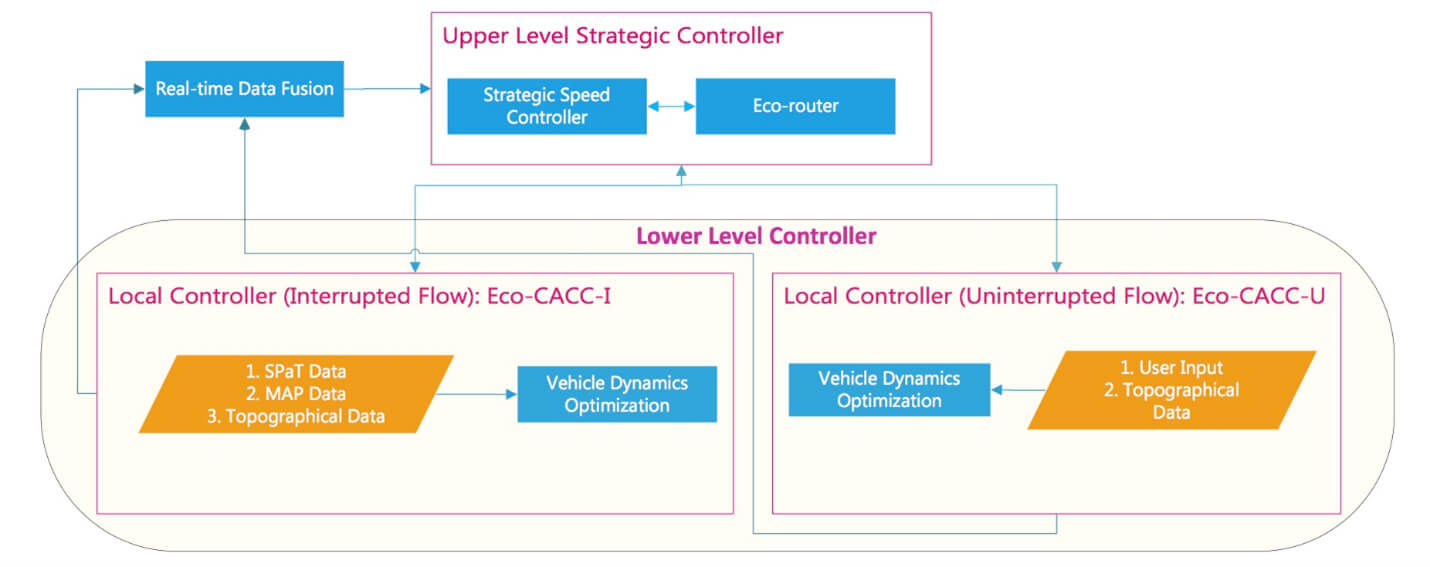Transportation is responsible for 69% of the petroleum consumption in the United States and 33% of the country’s CO2 emissions. Any decrease in the energy used by transportation will have notable environmental benefits. Rapidly emerging technologies such as vehicle-to-vehicle (V2V), vehicle-to-infrastructure (V2I), battery-only electric vehicles (BEVs), and hybrid electric vehicles (HEVs) have the ability to immensely improve the efficiency and longevity of the transportation system.
The main objective of the Center for Sustainable Mobility’s Eco-CAC project is to significantly reduce vehicle energy consumption. Eco-CAC uses computer algorithms to calculate vehicle routes and speeds that optimize energy use based on the current and predicted traffic conditions. That information is relayed to connected automated vehicles (CAVs), which adjust their route and speed accordingly. Specifically, the Eco-CAC is a novel integrated control system that (1) routes vehicles in a fuel/energy-efficient manner for internal combustion engine vehicles (ICEVs), battery-only electric vehicles (BEVs), and hybrid electric vehicles (HEVs); (2) selects vehicle speeds based on anticipated traffic network evolution; (3) minimizes vehicle fuel/energy consumption near signalized intersections; and (4) intelligently modulates the longitudinal motion of vehicles within a cooperative platoon to minimize its fuel/energy consumption.

VTTI researchers tested the Eco-CAC system considering the current and future vehicle compositions in a simulation environment on the Los Angeles downtown network. The current vehicle composition, which includes 86.8% ICEVs, 7.7% BEVs, and 5.5% HEVs, was constructed based on 2019 vehicle sales data in California. Researchers used a future vehicle composition of 50% ICEVs, 30% BEVs, and 20% HEVs. The study found that the Eco-CAC system effectively reduced fuel and energy consumption, travel time, total delay, and stopped delay in heavily congested conditions for both vehicle compositions. It was further found that different vehicle compositions produced different results. In particular, the maximum energy consumption savings for BEVs (36.9% savings) for the current vehicle composition was observed at a 10% CAV MPR in mild congestion, while the maximum savings for the future vehicle composition (35.5%) was observed at a 50% CAV MPR in no congestion.
For more information, please contact Hesham Rakha.